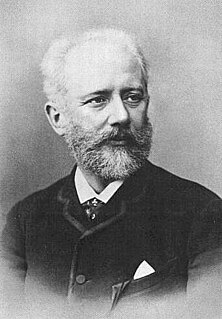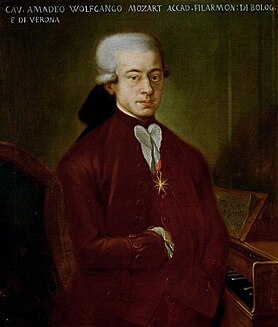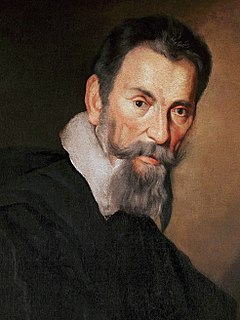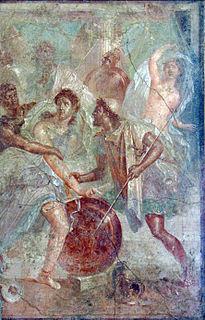Tarquinio Merula was an Italian composer, organist, and violinist of the early Baroque era. Although mainly active in Cremona, stylistically he was a member of the Venetian school. He was one of the most progressive Italian composers of the early 17th century, especially in applying newly developed techniques to sacred music.

Bernardo Strozzi, named il Cappuccino and il Prete Genovese was an Italian Baroque painter and engraver. A canvas and fresco artist, his wide subject range included history, allegorical, genre and portrait paintings as well as still lifes. Born and initially mainly active in Genoa, he worked in Venice in the latter part of his career. His work exercised considerable influence on artistic developments in both cities. He is considered a principal founder of the Venetian Baroque style. His powerful art stands out by its rich and glowing colour and broad, energetic brushstrokes.
Seminis is the largest developer, grower and marketer of fruit and vegetable seeds in the world. Seminis' hybrids claim to improve nutrition, boost crop yields, limit spoilage and reduce the need for chemicals. Their retail line includes over 3,500 seed varieties.

L'incoronazione di Poppea is an Italian opera by Claudio Monteverdi, with a libretto by Giovanni Francesco Busenello, first performed at the Teatro Santi Giovanni e Paolo in Venice during the 1643 carnival season. One of the first operas to use historical events and people, it describes how Poppaea, mistress of the Roman emperor Nero, is able to achieve her ambition and be crowned empress. The opera was revived in Naples in 1651, but was then neglected until the rediscovery of the score in 1888, after which it became the subject of scholarly attention in the late 19th and early 20th centuries. Since the 1960s, the opera has been performed and recorded many times.

The Sleeping Beauty is a ballet in a prologue and three acts, first performed in 1890. The music was composed by Pyotr Ilyich Tchaikovsky. The score was completed in 1889, and is the second of his three ballets. The original scenario was conceived by Ivan Vsevolozhsky, and is based on Charles Perrault's La Belle au bois dormant. The choreographer of the original production was Marius Petipa.

La finta semplice, K. 51 (46a) is an opera buffa in three acts for seven voices and orchestra, composed in 1768 by then 12-year-old Wolfgang Amadeus Mozart. Young Mozart and his father Leopold were spending the year in Vienna, where Leopold was trying to establish his son as an opera composer. He was acting on a suggested request from the Emperor Joseph II that the young boy should write an opera.
Francesco Sacrati was an Italian composer of the Baroque era, who played an important role in the early history of opera. He wrote for the Teatro Novissimo in Venice as well as touring his operas throughout Italy. His most famous piece is La finta pazza, said to be the first opera ever performed in France. The manuscript of this work was long thought to be lost but a touring edition of the manuscript was discovered by musicologist Lorenzo Bianconi in 1984. Some of the music bears striking similarities to the score of Monteverdi's L'incoronazione di Poppea, prompting scholars to speculate that Sacrati had a part in composing the surviving version of that opera. The United States premiere of La finta pazza, and first performance outside Europe, occurred in April 2010 at Yale University.
The year 1644 in music involved some significant events and new musical works.

Anna Renzi was an Italian soprano renowned for her acting ability as well as her voice, who has been described as the first diva in the history of opera.

Founded in 1959, The El Paso Museum of Art (EPMA) is located in downtown El Paso, Texas. First accredited in 1972, it is the only accredited art museum within a 250-mile radius and serves approximately 100,000 visitors per year. A new building was completed in 1998. In addition to its permanent collections and special exhibitions, the museum also offers art classes, film series, lectures, concerts, storytelling sessions and other educational programs to the West Texas, Southern New Mexico and Ciudad Juarez, Mexico community. EPMA's Algur H. Meadows Art Library houses a special collection of art and art history reference books.

Giacomo Torelli was an Italian stage designer, engineer, and architect. His work in stage design, particularly his designs of machinery for creating spectacular scenery changes and other special effects, was extensively engraved and hence survives as the most complete record of mid-seventeenth-century set design.

La Circe is an opera in three acts by Josef Mysliveček set to a libretto by Domenico Perelli that is based on Greek legends about the sorceress Circe. This opera belong to the serious type in Italian language referred to as opera seria.

The Enchanted Island is a pasticcio (pastiche) of music by various baroque composers, including George Frideric Handel, Antonio Vivaldi, and Jean-Philippe Rameau, devised and written by Jeremy Sams after The Tempest and A Midsummer Night's Dream by William Shakespeare. It was created by Julian Crouch and Phelim McDermott and premiered by the Metropolitan Opera on December 31, 2011, starring David Daniels, Joyce DiDonato, Danielle de Niese, Luca Pisaroni, and Lisette Oropesa. The popular 70-year-old Spanish tenor, Plácido Domingo, played the small but important part of the sea god Neptune. The following month a performance of the pasticcio was broadcast live into movie theaters across the world as part of the Metropolitan Opera Live in HD series. In late 2012, Virgin Classics released this broadcast version on DVD. The Met revived The Enchanted Island two seasons later. Daniels, de Niese, Pisaroni, and Domingo revived their roles from the premiere. Susan Graham assumed the role of Sycorax from DiDonato.

The Italian composer Claudio Monteverdi (1567–1643), in addition to a large output of church music and madrigals, wrote prolifically for the stage. His theatrical works were written between 1604 and 1643 and included ten operas, of which three—L'Orfeo (1607), Il ritorno d'Ulisse in patria (1640) and L'incoronazione di Poppea (1643)—have survived with their music and librettos intact. In the case of the other seven operas, the music has disappeared almost entirely, although some of the librettos exist. The loss of these works, written during a critical period of early opera history, has been much regretted by commentators and musicologists.

Achilles on Skyros is an episode in the myth of Achilles, a Greek hero of the Trojan War. Not existing in Homer's epic poem Iliad, the episode is written down in detail in some later versions of the story, particularly the Achilleid by the Roman poet Statius. The story of how Achilles disguised himself as a girl at the court of the king of Skyros, fell in love with one of the princesses, and married her before leaving for Troy, became a popular topic in arts and literature from Classical times until the middle of the 20th century. The carnavalesque disguises and gender transpositions at the heart of the story were particularly popular in opera, with over 30 different operas on the theme between 1641 and 1857.

The Teatro Novissimo was a theatre in Venice located in the Campo Santi Giovanni e Paolo with its entrance on the Calle de Mendicanti. It was the first theatre built in Venice specifically for the performance of opera. Because it was purpose-built, it had a wider stage than its existing competitors which allowed for the elaborate productions which became the Novissimo's hallmark. The theatre opened in the Carnival season of 1641 with the premiere of Sacrati's opera La finta pazza. After its last production in 1645, the theatre was closed amidst mounting debts and was demolished in 1647.












